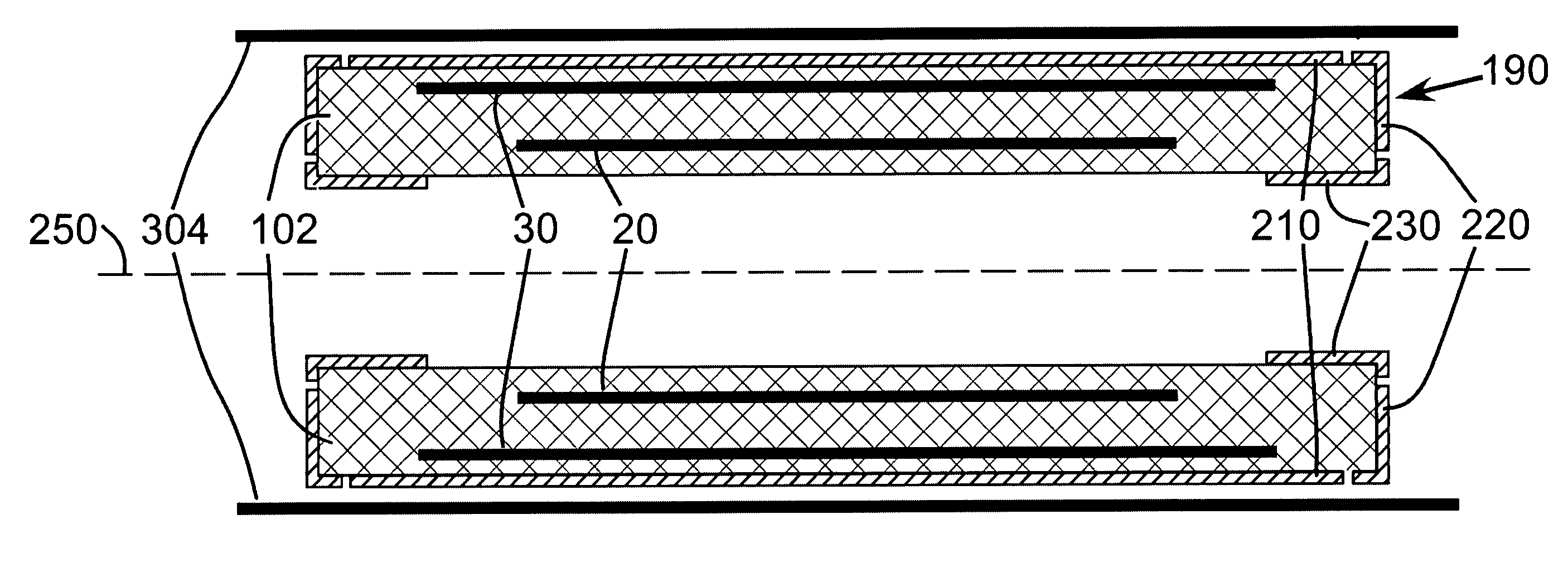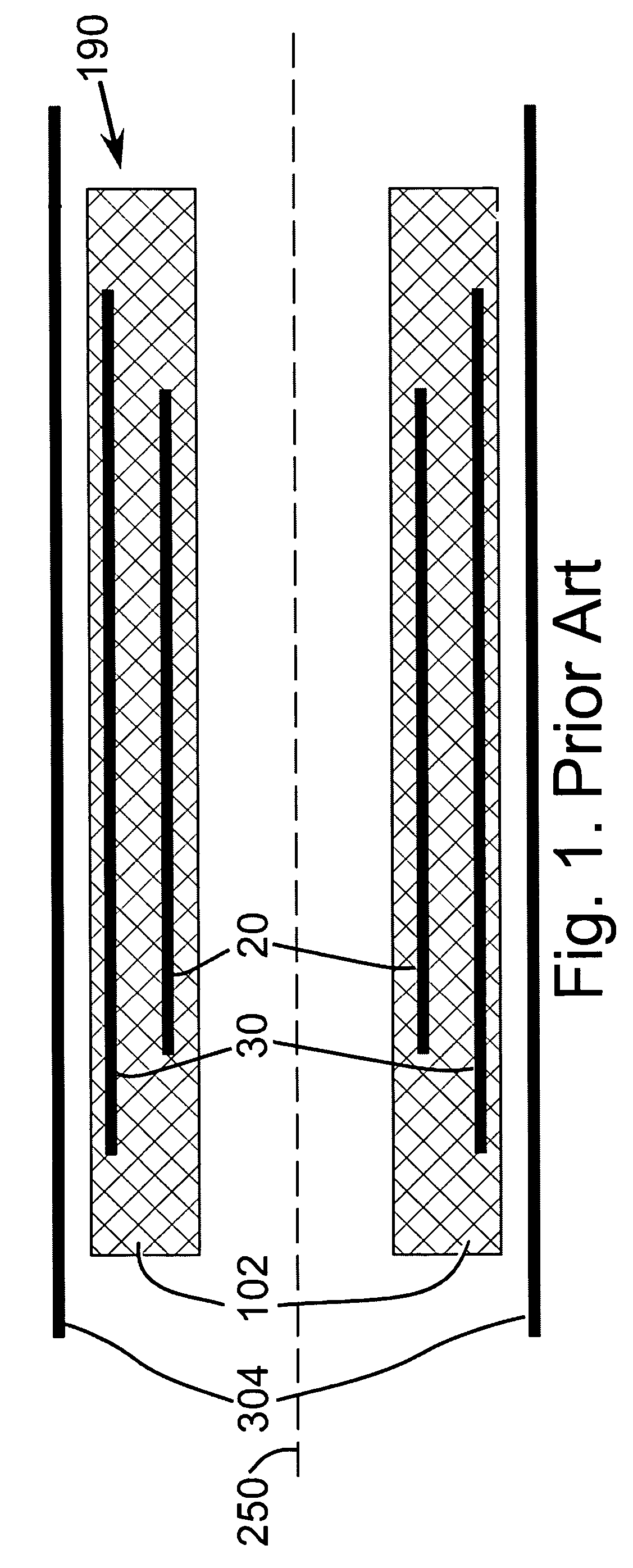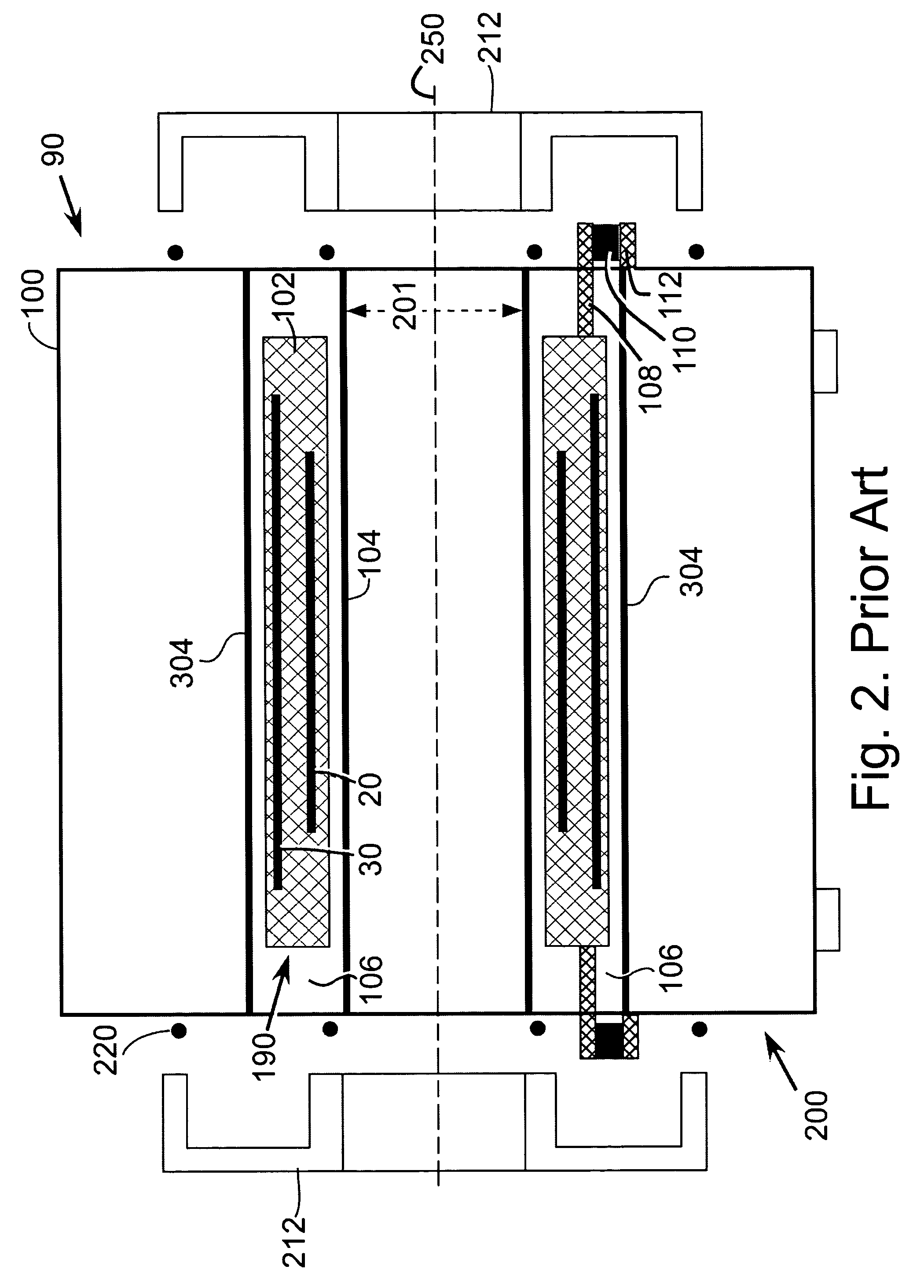Active-passive electromagnetic shielding to reduce MRI acoustic noise
a passive electromagnetic shielding and mri scanner technology, applied in the field of low acoustic noise mri scanner, can solve the problems of many medical patients' objectionable, cryostat and other metallic parts of the magnet assembly are also sources of vibration and acoustic noise, and achieve the effect of reducing acoustic nois
- Summary
- Abstract
- Description
- Claims
- Application Information
AI Technical Summary
Benefits of technology
Problems solved by technology
Method used
Image
Examples
Embodiment Construction
[0029]Referring to FIG. 2 there is shown an illustrative MRI device 90 to which embodiments of the present invention are applicable. MRI device 90 is of a type useful in producing magnetic resonance (MR) images of a patient or subject. Throughout the figures, like numerals represent like elements. FIGS. 1–6 show MRI device 90 based on a closed, cylindrical superconducting magnet assembly 200. It is to be appreciated by one skilled in the art that the functions and descriptions of the present invention are equally applicable to an open magnet configuration.
[0030]FIG. 1 is a cross-sectional side view of a prior art actively shielded gradient assembly. The actively shielded gradient coil winding consists of an inner active gradient winding portion 20 and an outer gradient winding portion 30. Generally these are electrically connected in series and powered by a single power amplifier. They could be powered by two separate power amplifiers. The active gradient coil winding 20 plus 30 is ...
PUM
 Login to View More
Login to View More Abstract
Description
Claims
Application Information
 Login to View More
Login to View More - R&D
- Intellectual Property
- Life Sciences
- Materials
- Tech Scout
- Unparalleled Data Quality
- Higher Quality Content
- 60% Fewer Hallucinations
Browse by: Latest US Patents, China's latest patents, Technical Efficacy Thesaurus, Application Domain, Technology Topic, Popular Technical Reports.
© 2025 PatSnap. All rights reserved.Legal|Privacy policy|Modern Slavery Act Transparency Statement|Sitemap|About US| Contact US: help@patsnap.com



